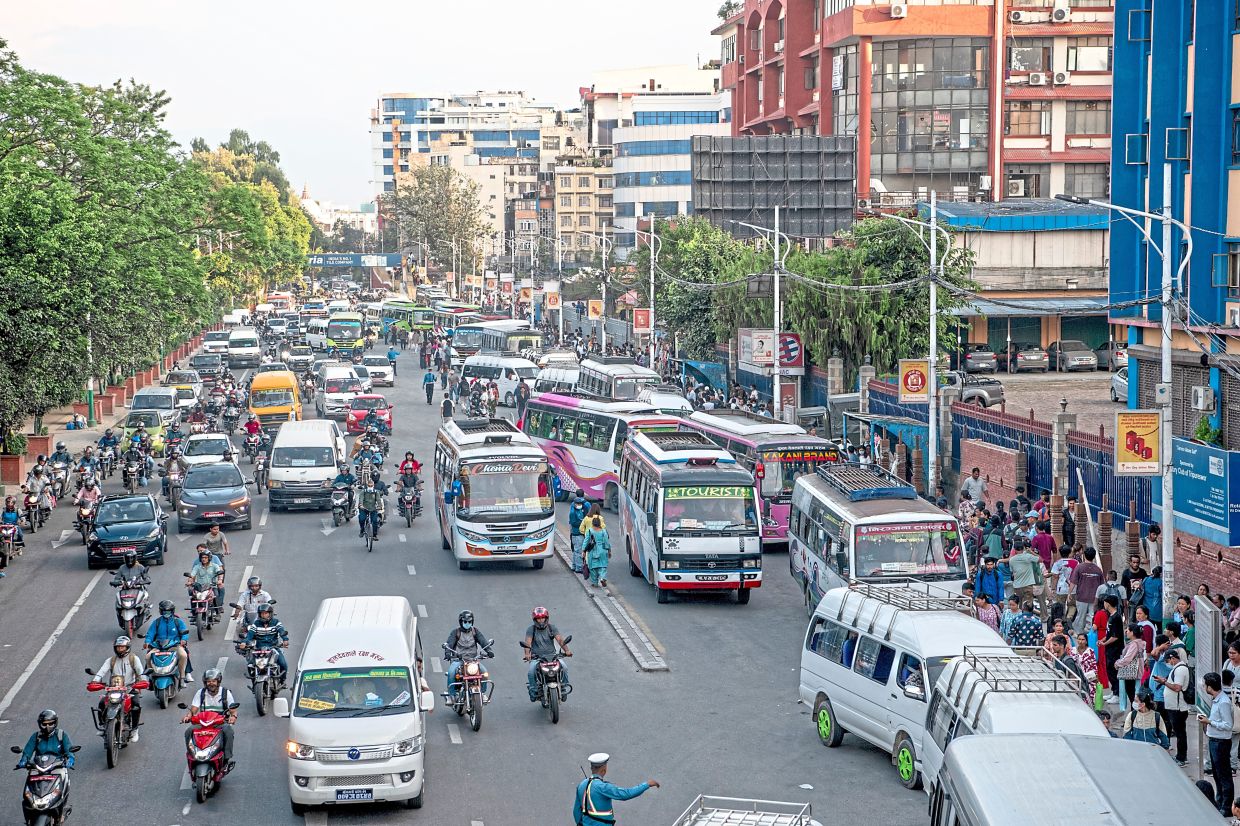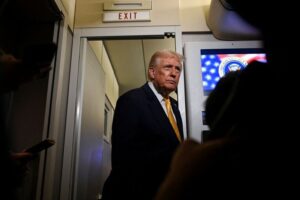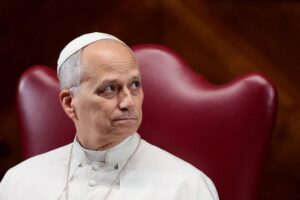
THE narrow streets of Kathmandu – built for pedestrians and rickshaws – now choke with engines. Buses, motorbikes, trucks and taxis clog the valley, horns blaring, exhaust burning the eyes.
But among the chaos, a new sound has entered: a quiet hum.
Sleek electric vehicles glide past with ease, their arrival transforming both traffic and the country’s energy story.
In a nation of just over three million urban residents, the shift has been astonishing.
Over the past year, electric vehicles made up 76% of passenger cars sold in Nepal and half of light commercial vehicles. Five years ago, the number was virtually zero.
The country’s EV market share now trails only a handful of leaders like Norway, Singapore and Ethiopia. The global average sits closer to 20%.
The speed of adoption is no accident. Nepal’s government has pushed aggressively to leverage its vast hydropower, cut its reliance on imported fossil fuels and clear choking smog.
Its neighbour China – the world’s dominant manufacturer of battery-powered cars – has fuelled the shift by flooding the market with affordable models.
“For us, using electric vehicles is a comparative advantage,” said Mahesh Bhattarai, director-general of Nepal’s Customs Department.
“It’s good for us. In the global market, the Chinese EVs are expanding. The same is happening in Nepal.”
That openness to Chinese cars stands in sharp contrast to the United States and Europe, where governments have sought to shield domestic automakers from Beijing’s growing reach.
For developing countries like Nepal, the chance to leapfrog into a cleaner future carries its own allure.
The International Energy Agency estimates that by 2050, the world will add another one billion vehicles, most in low- and middle-income countries.
The trajectory of places like Nepal will determine how polluted those new roads become – and how much more carbon the atmosphere absorbs.
“We’re interested in making sure that this rapid growth in these emerging markets doesn’t follow the same trajectory as the developed markets,” said Rob de Jong, head of sustainable transportation for the United Nations Environment Programme.
Nepal has reason to push faster than most. A 2015 border skirmish with India squeezed its petroleum imports, then its largest energy source.
The crisis forced the government to double down on its rivers, building dams and transmission lines that today supply nearly every household with reliable, clean electricity.
To make the most of it, officials targeted transport – one of the last bastions of fossil fuel dependence.
Customs duties on electric vehicles were capped at 40% in 2021, compared with 180% for petrol cars.
Charging networks multiplied with help from the Asian Development Bank, which has financed dams and grid connections across the country.
The Nepal Electricity Authority built 62 public stations, while hotels and restaurants added hundreds more.
At those rates, charging an EV costs barely a fraction of filling a tank.
“At first, everybody was scared – how to establish and whether it would run or not,” said Kul Man Ghising, who managed the authority until March.
“But we tried and tried and tried.”
The gamble paid off. Private businesses now operate about 1,200 chargers, with thousands more in homes.
Showrooms buzz with buyers, and the once-unthinkable has become normal: electric SUVs are cheaper than petrol ones.
Yet success has created new tensions. Nepal relies heavily on import duties for revenue, and as petrol car sales plummet, the government has quietly raised EV tariffs and tightened lending rules.
The central bank recently doubled down-payment requirements for buyers.
Auto dealers worry that sub-standard models from lesser-known brands could undermine confidence in the market.
Advocates warn that without recycling systems, batteries could become a new environmental hazard.
“It’s a very positive direction they are going in,” said Rajan Babu Shrestha, distributor for India’s Tata Motors, “Stability is always a question mark.”
The Asian Development Bank’s Nepal chief, Arnaud Cauchois, shares the concern.
“Given the economic sense this conversion represents, I would see it as unlikely we would have major policy change,” he said. “But that’s basically a wish more than a conviction.”
Cars are only part of the story. A majority of Nepalis don’t own them at all, relying instead on motorbikes or smoke-belching buses.
Cleaning the air will mean tackling these fleets.
Chiri Babu Maharjan, mayor of Lalitpur, just across the Bagmati River from Kathmandu, says scooters overwhelm his streets. Few electric models have caught on.
“We are trying to reduce fossil fuel vehicles in my town,” he said. “This is very difficult, but we must do something.”
The state-owned Sajha Yatayat bus company is experimenting with a solution.
With government backing, it has deployed 41 electric buses on valley routes, painted bright green.
But to truly compete with private cars and scooters, says former chair Kanak Mani Dixit, the city needs at least 800.
China is stepping in here too, offering to donate 100 long electric buses to Nepal.
Dixit is unfazed: “We have been accepting foreign assistance since 1950. This is foreign assistance.”
Even with more buses, real change requires a regional transit authority powerful enough to carve out space for public transport and rein in the chaos of motorbikes. That body has been stalled by political squabbling.
Still, Dixit sees a turning point.
“The Kathmandu Valley is just waiting for someone to turn the key,” he said.
“Coincidentally, this is the time exactly when the electric buses have made an entry. And you could just suddenly find things much different another five years from now.”
Nepal’s rapid embrace of electric vehicles offers a glimpse of what is possible for emerging economies: a clean leap over the fossil-fuelled mess that richer nations endured. Yet it also shows how fragile such progress can be when subsidies, politics and infrastructure strain under the weight of change.
For now, though, the hum of electric motors on Kathmandu’s streets is more than just a novelty.
It is the sound of a nation trying to race ahead – on its own power. — ©2025 The New York Times Company
This article originally appeared in The New York Times





